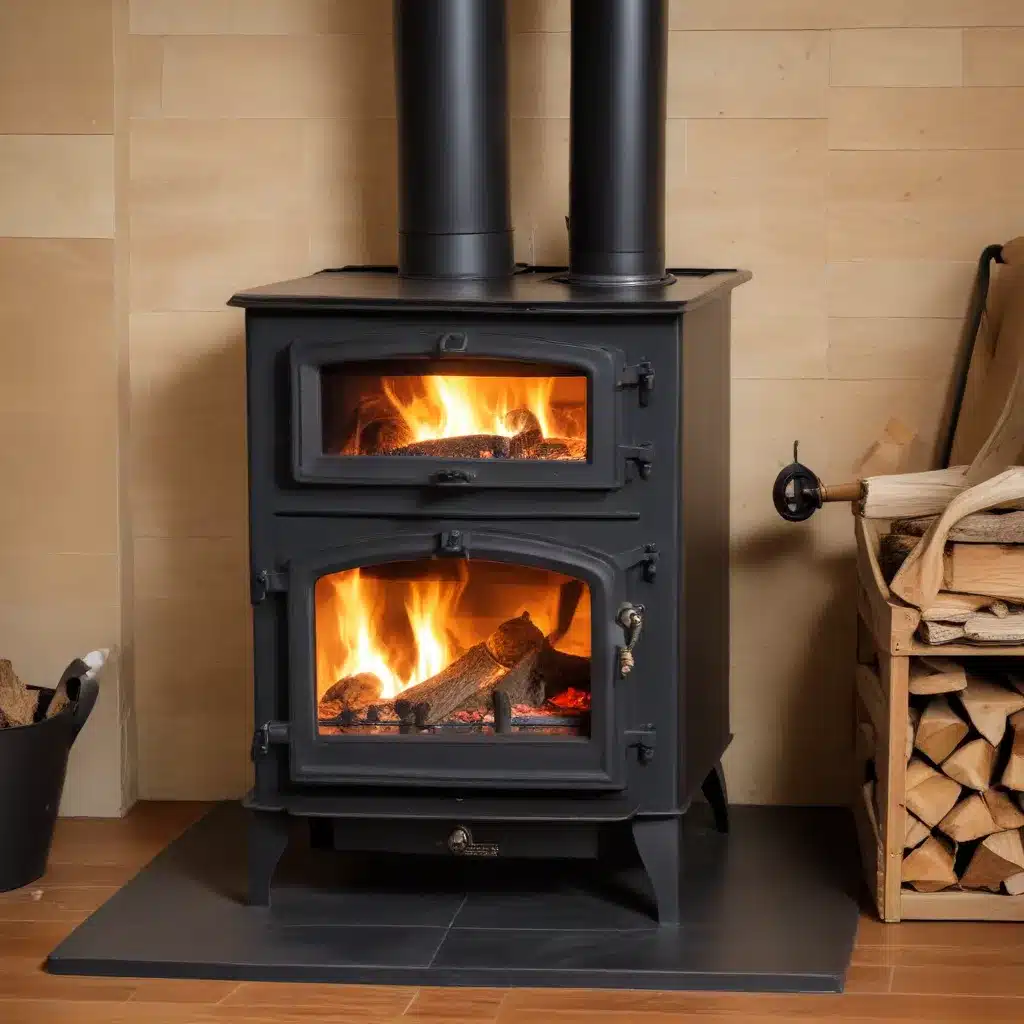
Unlocking the Secrets of Efficient Wood Heating
As a seasoned expert in the world of wood stoves and heating solutions, I’m thrilled to share with you the keys to achieving maximum fuel efficiency and optimizing your wood stove’s operation. Whether you’re a longtime wood stove enthusiast or just exploring the benefits of this renewable heating method, this comprehensive guide will provide you with practical tips and in-depth insights to ensure you’re getting the most out of your investment.
Understanding the Fundamentals of Efficient Combustion
The foundation of efficient wood stove operation lies in the principles of complete combustion. When wood is burned with optimal air-to-fuel ratios and sufficient dwell time for the volatile gases to fully combust, the result is a clean, hot, and highly efficient burn. Incomplete combustion, on the other hand, leads to wasted fuel, increased emissions, and reduced heat output.
One of the primary factors influencing combustion efficiency is the moisture content of the wood. Properly seasoned wood, with a moisture content around 20% by weight, will provide significantly more available energy than freshly cut wood at 45% moisture. By keeping your wood well-stacked and under cover in a sunny spot, you can ensure it dries to the optimal level before use, boosting the efficiency of your wood stove.
Mastering the Art of Airflow Management
Controlling the airflow through your wood stove is a crucial aspect of optimizing its performance. Many homeowners make the mistake of thinking they can “control the heat” by closing down the dampers and limiting the air supply. While this may provide short-term adjustments, it ultimately hinders complete combustion and reduces efficiency.
The key is to resist the urge to dampen down the stove, except for one important time: when the fire has burned down to a bed of glowing embers and you do not plan to add more fuel, such as at the end of the day before going to sleep. At this point, partially closing the damper can help limit the amount of heat drawn out of the house overnight, improving overall efficiency.
During regular operation, your focus should be on varying the rate at which you feed the fire, rather than trying to control the airflow. Maintaining a consistent, high-temperature combustion zone is essential for ensuring complete combustion and minimizing emissions.
Leveraging High-Efficiency Wood Stove Design
The introduction of EPA regulations in 1988 has led to significant advancements in wood stove design, resulting in dramatically improved efficiency and cleaner emissions. These modern, high-efficiency stoves often incorporate prewarmed combustion air, baffles, and catalytic devices to enhance the burning process and extract more usable heat from the fuel.
If you have an older, non-EPA certified stove, consider upgrading to a newer model. The efficiency gains can be substantial, often resulting in a 30% or more reduction in wood consumption while also significantly lowering particulate emissions. This investment not only benefits your wallet but also contributes to a cleaner environment for you and your neighbors.
Maximizing Heat Output Through Thermal Mass
While high thermal mass in a wood stove is not a strict requirement for efficiency, it can play a role in optimizing heat distribution and storage. The thermal mass of the house and its contents, such as drywall, tile, and concrete, can act as a heat sink, absorbing and gradually releasing the energy from the stove.
By maintaining a consistent, high-temperature combustion zone, the thermal mass of the stove itself becomes less critical. The heated air surrounding the stove will naturally circulate throughout the living space, warming the house effectively. This approach can be more efficient than relying solely on a high-mass stove, which may take longer to reach optimal operating temperatures.
Maintaining a Clean and Well-Serviced Stove
Proper maintenance of your wood stove is essential for ensuring ongoing efficiency and safety. Regular chimney cleaning to remove creosote buildup, as well as inspecting and replacing any worn or damaged components, will help keep your stove running at peak performance.
Additionally, keeping the stove’s air intake and exhaust paths clear of obstructions is crucial for maintaining optimal airflow and combustion. Regularly clearing the ash buildup in the firebox and ensuring the door gaskets provide a tight seal can also contribute to improved efficiency.
By following these best practices and staying on top of your stove’s maintenance, you’ll not only enjoy the warmth and ambiance of your wood-fired heating system but also maximize its fuel efficiency and environmental benefits.
Conclusion: Embracing the Art of Efficient Wood Heating
Mastering the art of efficient wood stove operation is a rewarding journey that can provide substantial benefits in terms of cost savings, environmental impact, and the cozy comfort of a well-heated home. By understanding the fundamentals of complete combustion, managing airflow, leveraging high-efficiency designs, and maintaining your stove with care, you’ll unlock the full potential of this renewable heating solution.
As you embark on your quest for maximum fuel efficiency, remember to stay vigilant, experiment with different techniques, and always prioritize safety. With the insights shared in this article, you’re well on your way to becoming a true wood stove heating expert, ensuring your home stays warm and your wallet stays full.
For more information and resources on wood stoves, fireplace maintenance, and sustainable heating methods, be sure to visit https://woodstoveheaters.com/. Our team of experts is always here to provide further guidance and support as you optimize your wood stove’s performance.


